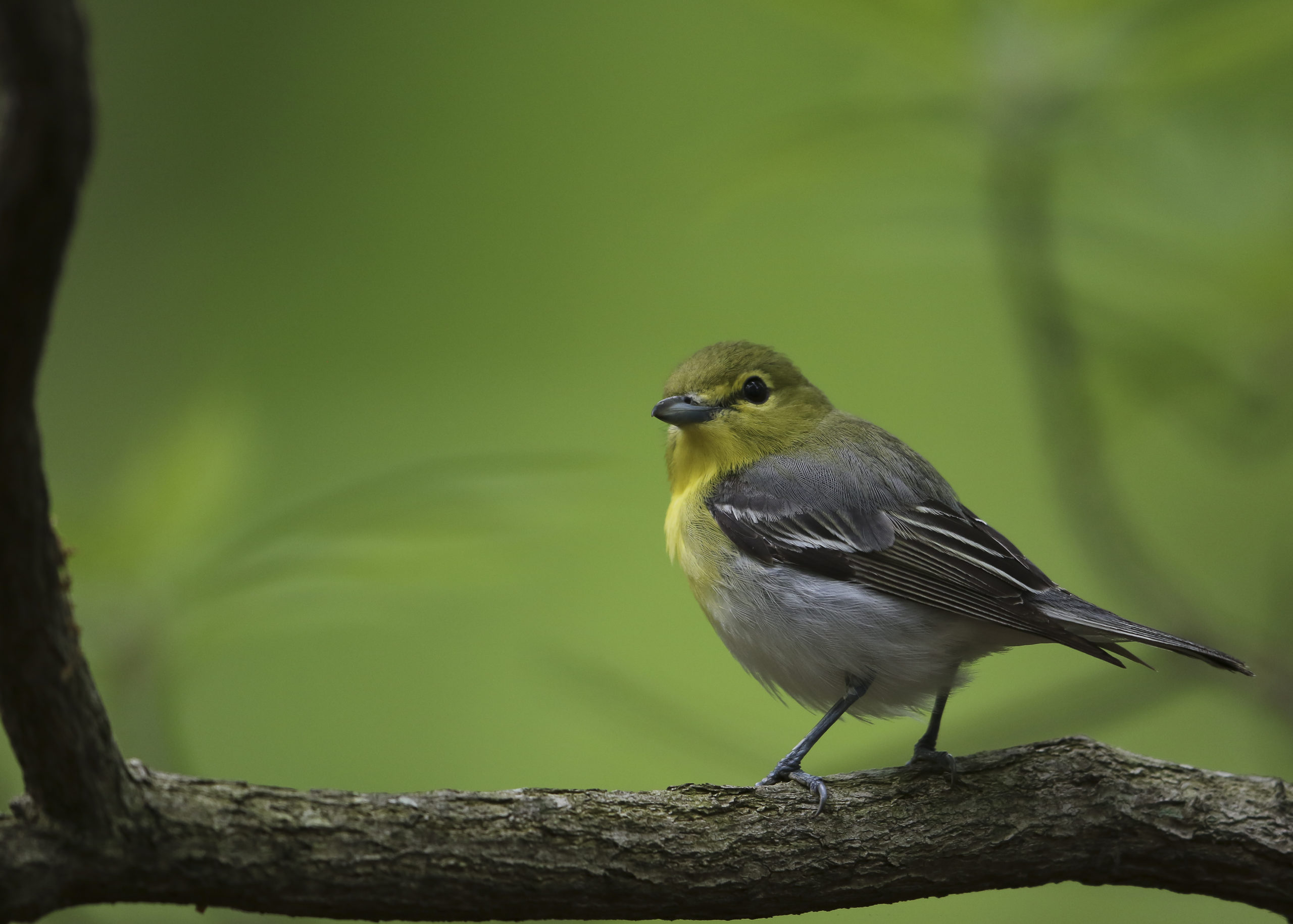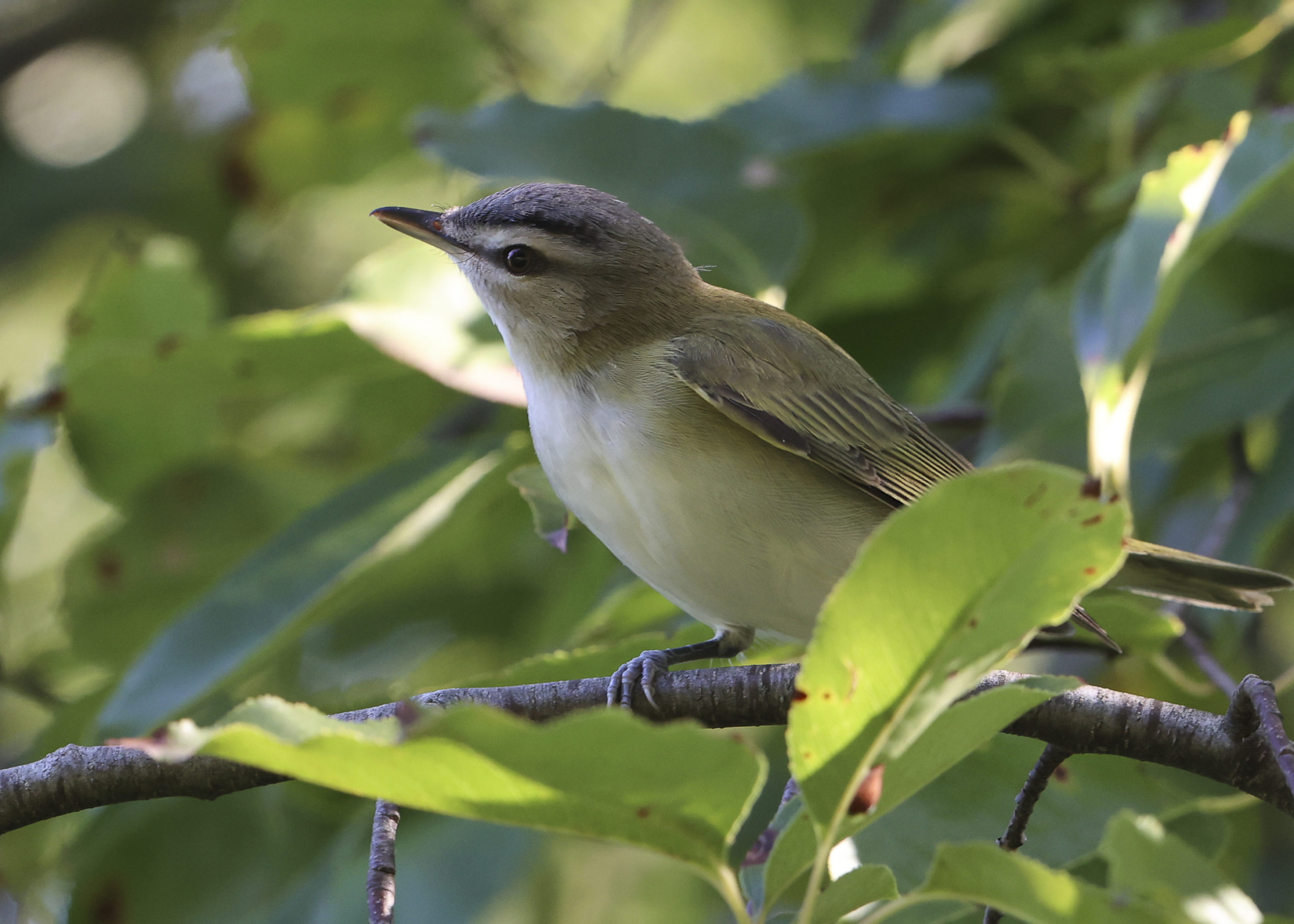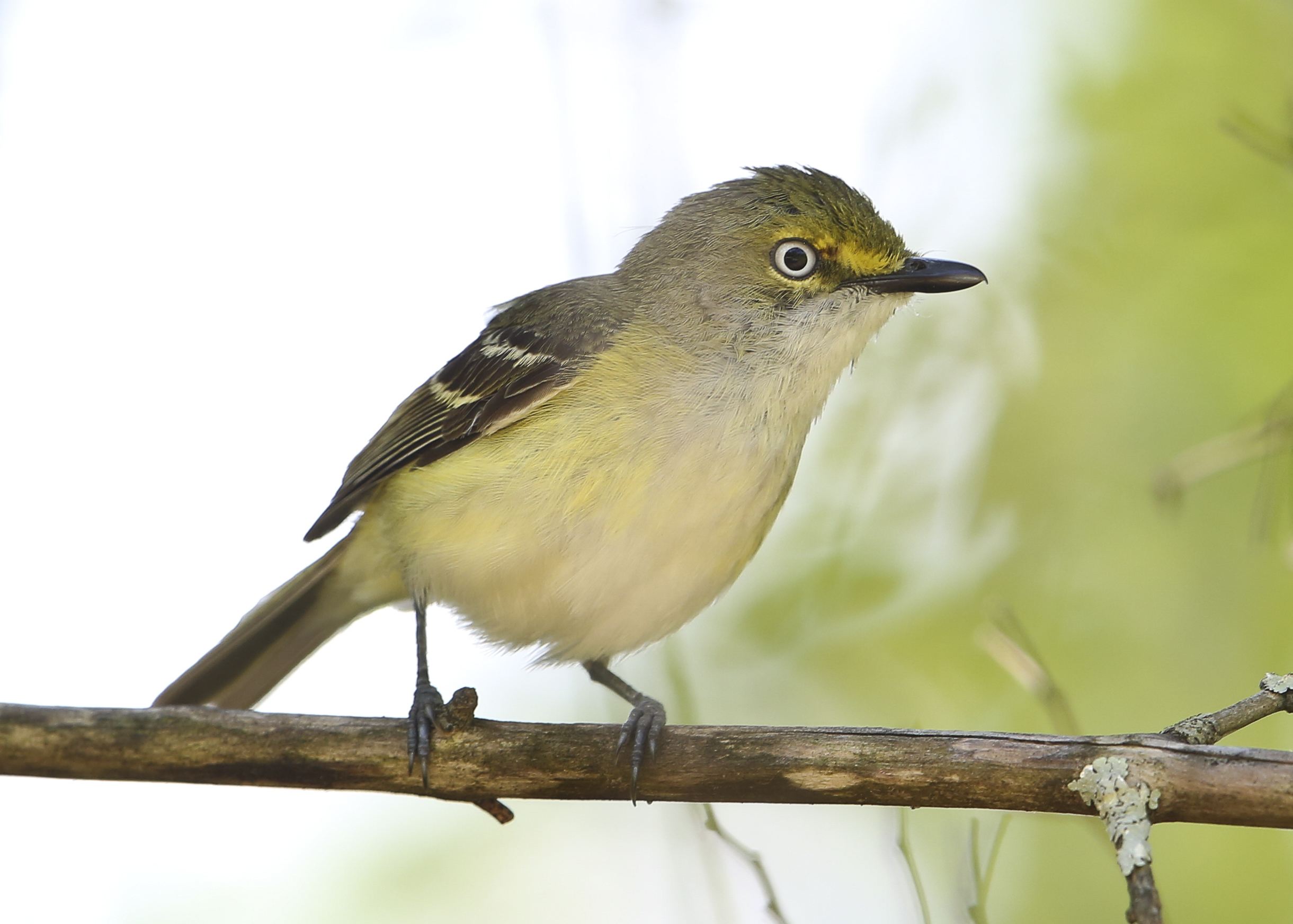The Alarmist Vireo




By Wayne Bierbaum
My favorite time of the year is spring; plants are blooming, fish are starting to spawn, and small birds like warblers are returning from their wintering grounds. This is when the warblers are bedecked in courtship colors and sing their courtship songs. Accompanying the warblers are other small birds like kinglets, gnatcatchers, and vireos.
Quite often a warbler or two will be found in the middle of a flock of kinglets or right next to a vireo. It would seem that the other birds add a layer of protection as the warbler travels, as alarm bells. Warblers are not loud or aggressive around threats but these other birds will call out the danger loudly and send a mobbing call for all birds in the area to come by and yell at the threat. Warblers generally give a sharp and short chipping sound as an alarm.
I was walking through the woods near the Patuxent River and heard a white-eyed vireo loudly squawking at something in a bush. The vireo was joined by blue-gray gnatcatchers and a couple of chickadees. A magnolia warbler was hopping around the outside of the bush but not saying anything. Getting closer, I saw that a large black rat snake coiled in the middle of the bush was the focus of the birds’ complaints. I doubt that I would have seen the snake without the vireo’s raspy yelling. As the snake slithered away, the vireo followed it, loudly complaining, until the snake went into a tree hollow.
Vireos are about the size of a small sparrow with shorter, thicker bills than a warbler and are generally a dull gray-green color. The name vireo is from the Latin root virtui, which means to be green and verdant. Like warblers, they are mostly insect-eaters. Several species nest in Maryland.
The ones I have encountered are quite vocal but the most common variety is easy to hear but hard to see.
The red-eyed vireo lives deep in the forest at the tops of trees. Their songs are high-pitched and inquisitive like they are asking Who are you? They will come down from the trees to mob a source of danger. Their eyes are very red and they have a white streak on the side of their face.
For me, the next most common is the white-eyed vireo. They seem to live at the edges of woods, ponds, or rivers. They have a loud peculiar call. Their standout feature is their white iris—they truly are white-eyed.
Another less common but loud vireo is the yellow-throated vireo. It is the most brightly colored and possibly the loudest. Unlike the red-eyed’s rising inquisitive toned song, the yellow-throated vireo has a short rise and fall tone. Besides the colorful yellow throat, this vireo has white rings around its eyes that cross its nostrils so it looks like it is wearing glasses. The yellow-throated vireo lives in open deciduous forests but requires a larger forest area to breed. Their numbers are declining due to deforestation.
The blue-headed vireo is one of the quieter vireos. It likes to live in areas with evergreens or old deciduous forests. They are more common in western Maryland. Besides having a bluish head, they have even a more pronounced set of white spectacles than the yellow-throated. The blue-headed and white-eyed vireos have more adaptive features than the yellow-throated and their populations have increased despite land clearing.
The last local vireo is the warbling vireo. I have not seen very many of these but they have one of the best singing voices of any forest bird—but when they are angry or mobbing, they have a very harsh, raspy, loud voice. They are said to be tolerant of humans and will nest near houses and parks. But their population is falling because they cluster together during winter in Central America in areas that are under logging stress.
All the vireos are at risk of the nest parasite, the brown-headed cowbird. Cowbirds lay eggs in other birds’ nests and the hatchlings will push other eggs or babies out of the nest. The vireos that nest deeper in the woods, like the blue-headed vireo, have less of a chance of being a victim of this nest parasite.
Different species of birds alert each other when danger is around. Following the harsh voices of vireos can help you locate a predator or quiet birds like warblers that show up to help the mob.
